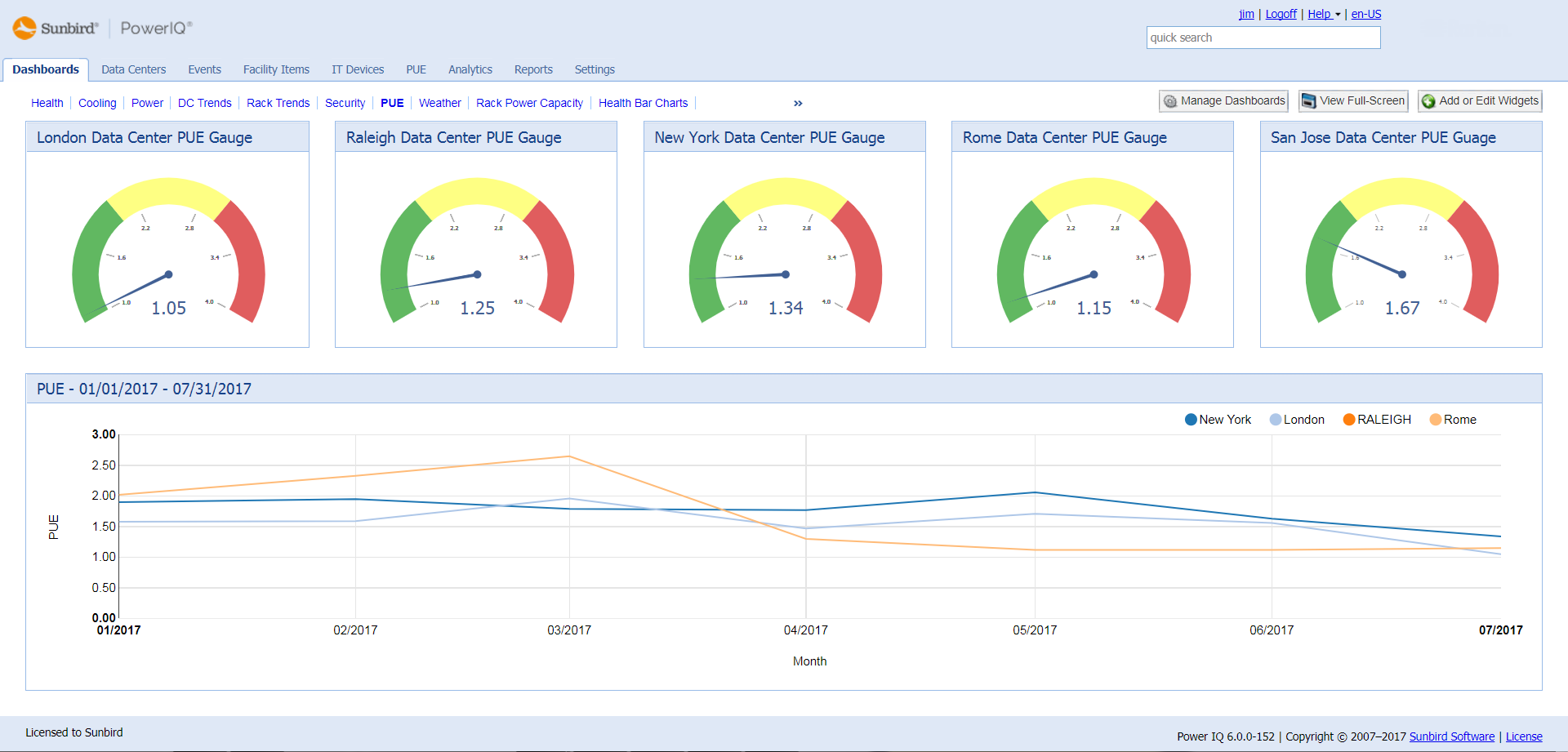
PUE, or Power Usage Effectiveness, which was developed by The Green Grid™, has become the standard for measuring data center efficiency. What does it really mean and how do I calculate it? Rumors are in industry is that you want to be as close to 1 as possible. Why 1? PUE is a ratio of the amount of power needed to drive and cool the data center vs the power draw from the IT equipment in the data center. 1, in the case of a ratio would mean that you have a perfect data center, one where all the power coming into the building makes it to the IT equipment with none used for loads to cool or light up the room and none lost in transmission to the IT equipment. The mathematics behind the ratio looks something like this:
PUE = (Total Facility Energy) / ( IT Equipment Energy)
So, how do you establish “the total facility energy”? Typically with a utility meter, however, installing what is called a “shadow meter” allows the data center operator to keep track of daily measurements of total facility power usage. Otherwise, the data center operator would have to wait monthly and rely on the bill from the utility to understand their total facility power usage.
To calculate “the energy consumption from IT equipment in the data center”, it is best to sum up the power readings at the PDUs, or Power Distribution Units, which distribute the power to the IT racks. You may also get this data RPPs (remote power panels), UPS, and more recently, intelligent rack PDU’s. In the event that Floor PDU’s or RPPs are not instrumented, many vendors offer aftermarket Branch Circuit Meters with split-core current transformers that snap into existing panels. The data can be manually read with a certain frequency or to eliminate additional overhead, the data can be automatically collected over a network and fed into an energy management or power monitoring solution that can automatically trend and report on PUE across all your data centers.
Click here to learn more about how Sunbird's DCIM provides PUE calculations.




























